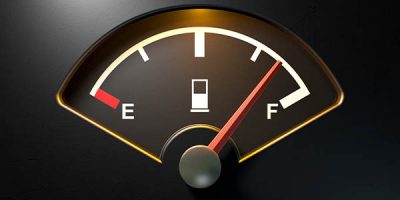VIDEO: Fuel Pump Level Sender Operation
How do modern gas gauges stay still when the gas in your tank moves around? This video is sponsored by Carter.

BMW Fuel System Repair Essentials
The BMW N54 fuel pump recall a few years ago brought to light the importance of the integrity of the fuel system and how it can contribute to the overall reliability of a vehicle. These fuel quality issues apply to all BMW vehicles with either port or direct injection. The underlying message here is that if the cleanliness and overall integrity of the fuel tank is ignored, it will damage any fuel pump. This is why addressing the fuel tank is essential during any pump replacement to prevent costly comebacks that can also hurt your reputation.
OBD II Misfire And Diagnosis
When diagnosing misfires, it’s important to use tools that allow you to go beyond a simple code reader that displays a P03XX. Even an OEM-level scan tool can’t tell you what the firing voltage is or what the ignition pattern looks like. Nor can it tell you if the serial data is accurate or correct. For that kind of information you need a DVOM or a graphing multimeter/oscilloscope that can look at sensor voltages directly and display primary and secondary ignition patterns.
Diagnosing EGR And Secondary Air Systems
The perfect internal combustion vehicle would be able to put the exact amount of fuel and air into the combustion chamber. If the perfect combustion event happened, you would get nothing more than water and carbon dioxide. We are not there yet. In the mean time, we have exhaust gas recirculation systems (EGR), secondary air injection and catalytic converters.
TECH TIP: Using a Five-Gas Analyzer to Diagnose Catalytic Converters
One of the most effective ways to resolve emissions issues is by sampling the exhaust gases with a five-gas analyzer. Levels of the five gases can indicate the root cause of the problem.
Diagnosing Exhaust Gas Recirculation (EGR)
Exhaust gas recirculation is the dilution of the air/fuel mixture to control amounts of exhaust gas. Since exhaust gas does not burn, this lowers the combustion temperatures and reduces NOx emissions from the engine. At lower combustion temperatures, very little of the nitrogen in the air combines with oxygen to form NOx. Most of the nitrogen is simply carried out with the exhaust gases.
Tech Tip: Kia MIL Illumination with Front Heated O2 Sensor DTCS
If a 2004-’06 Spectra 2.0L exhibits an MIL on
Tech Feature: Detecting Misfires in OBD II Engines
With OBD II, there’s no missing misfires. Most engine control systems with OBD II monitor the speed of the crankshaft between cylinder firings to detect misfires. The powertrain control module (PCM) notes the relative position of the crankshaft via the crankshaft position sensor (CKP) each time a trigger pulse is sent to the ignition system.
You Can Tune a Carburetor, but You Can’t Tuna Fish
I don’t know where the term “master engine tuner” originated, but I suspect it parallels that of “master piano tuner” because both disciplines transform apparent discord into apparent harmony. In this day of electronically managed engines, we forget that mechanically controlled spark advance curves and carburetor mixtures don’t compensate for changes in barometric pressure and
Up in Vapor
Gasp! It’s the “Gas Cap Code”! Oh no, you just pulled a code P0422, evaporative purge small leak detected… Here goes the needle in the haystack syndrome. So what do you do? Recommend a new gas cap and ship it? Well you could do that, but would that be in your or your customer’s best
Diagnostic Dilemmas: The Pressures of Intake Manifold Vacuum Tests
Several years ago, a retired school teacher brought in a 1994 Chevrolet S-10 Blazer that had developed an intermittent rough idle condition. Although a rebuilt engine had been installed a year before, and all of the wiring and vacuum hoses looked as if they were in factory condition, I took nothing for granted. An ignition
